Sealife guideThe yellow stingrayUrobatis jamaicensis
Last updated on 09/02/2024 at 11:51 PM
Taxonomy
- Common name: Yellow stingray, yellow spotted stingray, round stingray, maid stingray
- French name: Raie pastenague jaune
- Scientific name: Urobatis jamaicensis (Cuvier, 1816)
- Family name: Urotrygonidae
- Order name: Myliobatiformes
- Class name: Elasmobranchii
Description
The yellow stingray has a flattened, oval-shaped body that measures about 8 inches on average.
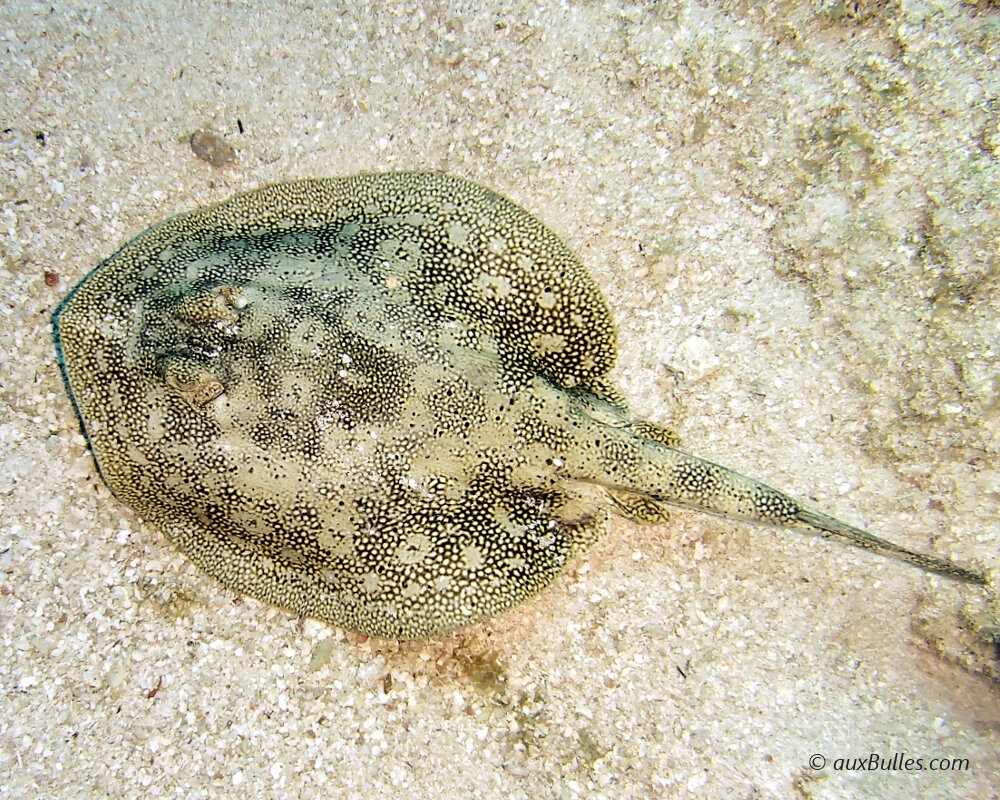
The yellow stingray has a flattened oval-shaped body
The dorsal side of the yellow stingray's body is covered with white or yellowish spots and patterns on a predominantly greenish or brownish background. The coloration of its ventral side, on the other hand, is yellowish or brownish-white.
The eyes of the yellow stingray are prominent on the dorsal side of its head, while its tail extends into a small caudal fin.
Geographic range
The yellow stingray can be found in the western Atlantic ocean, from the coasts of North Carolina down to the northern coasts of South America, including the Florida Keys where it is common.
It is also present throughout the Gulf of Mexico and the Caribbean sea, along the coasts of the Antilles.
Habitat
The yellow stingray is usually found from the surface down to about 65 feet but is particularly common in shallow sandy areas.
It frequents sandy bottoms of coral reefs and lagoons.
Diet
Buried in the sand during the day, the yellow stingray hunts for prey mainly at night. It primarily feeds on small crustaceans and fish.
Reproduction
The yellow stingray is ovoviviparous.
Did you know ?
Like all stingrays, the yellow stingray takes in water through its spiracles on its dorsal side and expels it through the numerous gill slits on its underside to avoid sucking in sand particles.
The yellow stingray displays significant variation in color and patterns to blend more easily into its environment, helping it evade predators while staying hidden and ready to ambush prey.
The yellow stingray is listed as many other marine species within The IUCN Red List of threatened species. The yellow stingray appears in the IUCN Red List since 2021 within the category Least Concern !
Tips for observing
As long as the yellow stingray doesn’t feel exposed, it is possible to approach it, but be cautious of its defensive reactions.

The tail of the yellow stingray extends into a small caudal fin
Even though the yellow stingray is considered harmless due to its small size, remember that it has a venomous spine on its tail as a defense mechanism !
Discover also

Black blotched stingray
(Taeniura meyeni)
(Taeniura meyeni)
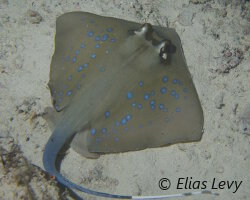
Blue spotted stingray
(Neotrygon kuhlii)
(Neotrygon kuhlii)
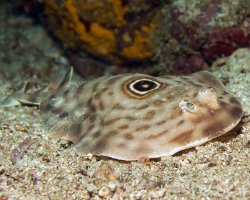
Bullseye electric ray
(Diplobatis ommata)
(Diplobatis ommata)
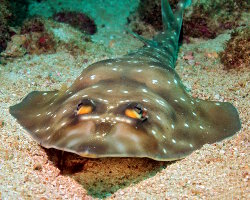
Gorgona guitarfish
(Pseudobatos prahli)
(Pseudobatos prahli)
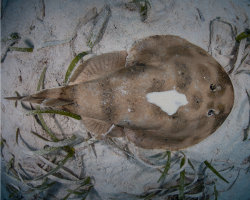
Lesser electric ray
(Narcine bancroftii)
(Narcine bancroftii)
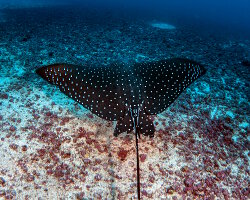
Pacific white-spotted eagle ray
(Aetobatus laticeps)
(Aetobatus laticeps)
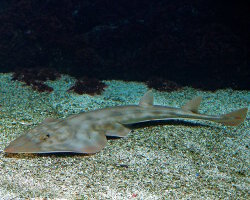
Shovelnose guitarfish
(Pseudobatos productus)
(Pseudobatos productus)
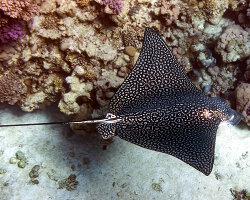
Spotted eagle ray
(Aetobatus ocellatus)
(Aetobatus ocellatus)
Our latestUpdates

Friday, December 19th 2025
The magic of Christmas decorations
Discover Christmas decorations in Florida: giant trees, illuminated palm trees, magical light displays and tropical settings to experience the holiday magic under the sun.
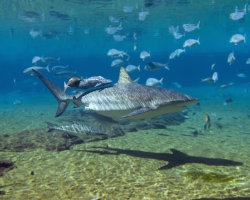
Monday, December 15th 2025
The dusky shark
Discover the dusky shark, one of the world's largest coastal sharks, and learn why this powerful predator is essential to marine ecosystems.

Friday, December 12th 2025
Christmas magic at Disney hotels
Experience the magic of Christmas at Disney hotels: enchanting decorations, giant Christmas trees, dazzling lights and a festive holiday atmosphere.
Photo of the Day
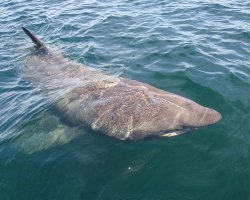
Requin pèlerin
(Cetorhinus maximus)
(Cetorhinus maximus)


